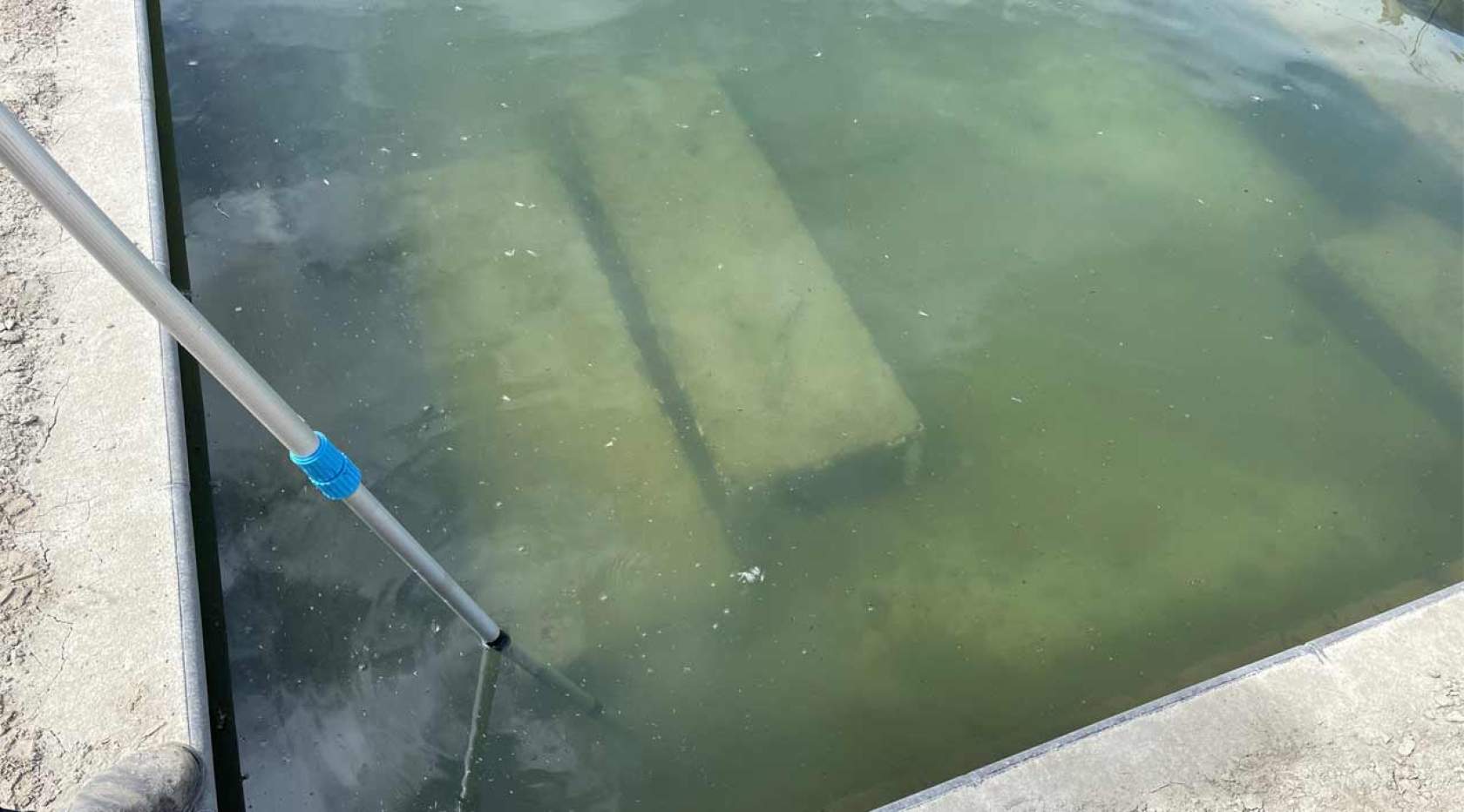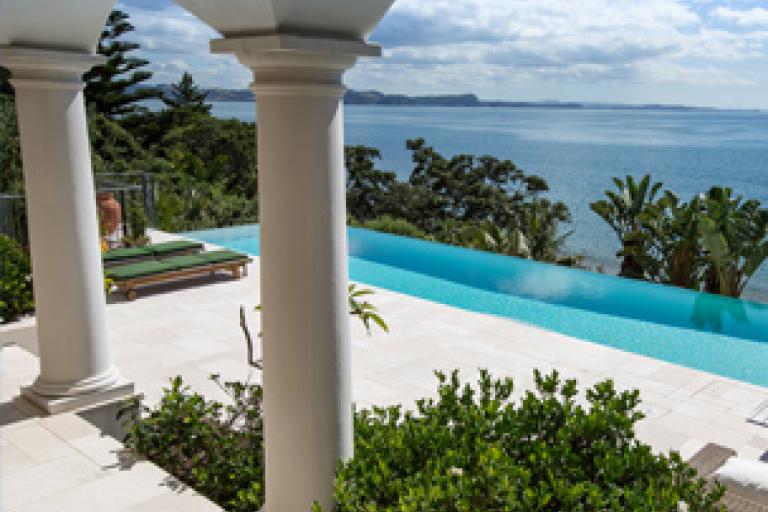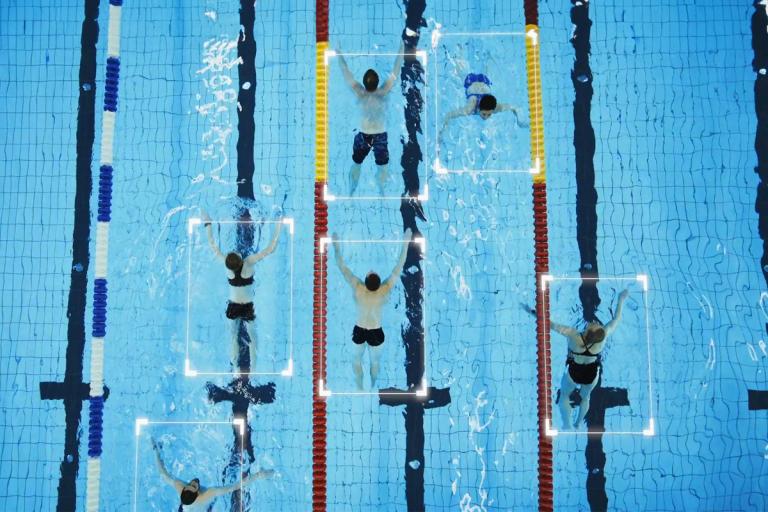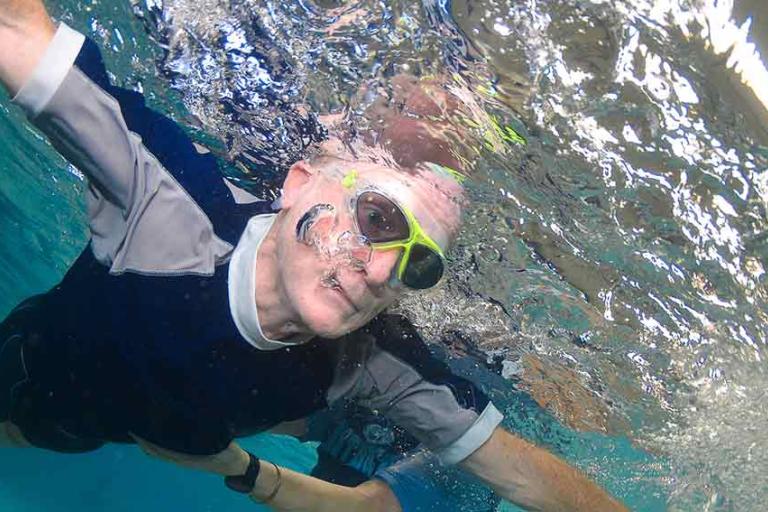Cleaning swimming pools after storms and floods

In light of the devastating floods in New Zealand, we reprise this helpful advice from David Lloyd, pool chemical expert and founder of International Quadratics, on how to clean up and treat swimming pools after storms and floods.
Cyclones, storms and flooding has several effects on swimming pools, including the following:
• Dirt and debris washed into the pool
• Phosphates introduced into the water
• Dilution of the chlorine causing algae to form
• Dilution of the salt and mineral content of the water
Below are some quick tips for handling the situation.
Step 1. The first step is to clean the pool of dirt and debris. Remove any large debris such as branches etc, empty both the skimmer and pump basket. In the case of the water being very dirty such as when soil has been flushed into the pool, a heavy duty floc may be required. Follow the label instructions of the floc you are using and then vacuum the pool to waste. See below for important information relating to keeping the pH high for flocs to work properly.
Step 2. Test and re-balance the pool water including the addition of salt and minerals where
required.
Step 3. Shock dose the pool.
Step 4. Add the required dose of phosphate remover to remove unwanted phosphates.
Step 5. In case of cloudy water use a clarifier.
Step 6. Add a winteriser treatment or maintenance algaecide.
Flocculants and coagulants
This might be an appropriate time for a refresher course on flocculants and how they work.
The terms “flocculants” and “coagulants” are synonymous with each other; however the process of clearing cloudy/dirty pools is in fact a two-stage process involving both coagulation and flocculation.
Turbidity (or cloudiness) of water is caused by fine particles suspended in the water. These particles are typically smaller than two microns and will normally pass through the filter system. They are of low density and will therefore be suspended in the water. Most particles are negatively charged and repel each other.
In order to remove these particles it is first necessary to add a flocculent (positively charged) which will coagulate the fine particles into larger “flocs” by neutralising the negative charge, allowing the particles to come together and form a floc.
Some flocs will be “light flocs” which will tend to remain suspended in the water or even rise to the surface of the pool and are then caught on the filter bed. Algae and organic matter may form lighter flocs.
Soil, dust and clay, being denser will form heavier flocs which will sink and form sedimentation on the floor of the pool and this should be then vacuumed to waste. The type of flocculent used will also dictate if a light or heavy floc is formed. Aluminium-based flocs such as poly aluminium chloride (PAC) or Alum will form a heavy floc which settles on the bottom while some Cationic Electrolytes and natural flocs will form light flocs and tend to be caught by the filter.
In the case of a really dirty pool, for example after large storms or in the case of cyclones, we would recommend the use of a heavy floc such as liquid PAC or powdered/granular Alum.
The importance of pH
It is important to note that aluminium flocs only work at a high pH so you must first raise the pH of the pool to at least 8 when using Alum or 7.8 when using a liquid PAC based product.
Alum has a low pH and will immediately reduce the pH of the water after addition.
Common practice when using Alum is to raise the pH to 8+ using Soda Ash and then add 2kg to 4 kg of sodium bicarb (buffer) at the same time as adding the Alum. This will compensate for any drop in pH and also increase the Total Alkalinity.
When using a PAC based product, the pH should be raise to at least 7.8. However, the effect on pH of the water after addition is significantly less than that of Alum so further reduction is usually unnecessary. It should also be noted that Alum contains typically 8 per cent Al2O3 (the active floc) while PAC may contain 23 per cent Al2O3 (three times stronger).
Floccing points
Some important points to note when flocking pools are:
• It is difficult to floc live algae. If there is any evidence of the presence of algae, super chlorinate using liquid chlorine (this also assists in the raising of the pH).
• If Phosphates are present the floc may be partially used up floccing the Phosphates and slow up the process of clearing the pool.
• High TDS levels or Salt will also slow up or prevent efficient flocculation. The use of a fast floc which has an inbuilt accelerator may compensate for this.
• Most flocs are incompatible with DE or cartridge filters. DE filters should be set on ‘recirculation’ or ‘By-Pass’.
• In the case of cartridge filters do not use a floc unless you have a valve to allow pool water to waste, in which case you should first remove the cartridge then vacuum to waste. If no waste valve is fitted, then a light clarifier may be used but the cartridge should be cleaned frequently to avoid a build up of pressure.
One last tip – after vacuuming and rebalancing the pool water place a clarifier in the skimmer basket to really polish the water and leave it crystal clear.
Beware emptying pools
No matter how bad you think the water might be after a storm, be aware that flood water will have made the ground conditions around the foundations of the pool very wet. Pools should not be drained until ground conditions have dried to at least the depth of the pool as the entire shell of the pool (fibreglass or concrete) can “pop” out of its original position with the change in hydrostatic pressures.
Except for the most severely affected, almost all swimming pools and spas can be brought back to life after floods, storms and fire without the need to drain the water. In that instance it should always be left to a professional - a pool owner should never drain their own pool.
Electrical and other safety issues
Additionally, Poolwerx COO Nic Brill has warned that electrical issues as well as water contamination, residual debris, insect infestation and pool surface staining pose serious health and safety issues.
He says that floods leave a trail of devastation behind for families and homeowners, and as we begin to tackle this huge clean up job, health and safety is a number one priority.”
Firstly, the priority is ensuring the equipment such as the pool pump and chlorinator are safe to operate.
“If the pool equipment was completely or partially submerged, ensure a licensed electrical contractor checks the whole installation before arranging the reinstatement of electrical supply to the property. Water contamination is also high on the list of risks when cleaning up.
“It’s a big clean up, and pool owners should remember to wear protective clothing, masks, gloves and goggles, and wash their hands with disinfectant afterwards to help prevent contamination,” he says.
“Alongside the risk of submerged debris, flood waters often bring with them a few unwanted guests, such as trapped wildlife, including snakes. Flooded pools can also quickly become the perfect breeding ground for toads, mosquitoes and other insects.”
In addition to mud, floods will often pose the risk of a green pool. Beyond aesthetics, swimming in a green pool places you at an immediate increased risk of a gastro outbreak, and more. A Griffith University study found that green pools are a perfect breeding ground for Legionella, Cryptosporidium and Giardia, parasites that can cause gastroenteritis, ear infections and, in severe cases, death among the very young and elderly.
To drain or not to drain? It depends on where the pool is, and what soil it is sitting on, however it’s important to get expert advice before you try to drain the pool as the pool shell is at risk of popping out from the ground - another safety risk and expensive to fix. The good news is, it’s possible to treat most flood impacted pool water, it will just take a little longer.
Lastly a flood can permanently stain the pool surface.
“The debris and sewage-contaminated pool water left behind also has the potential to permanently stain the pool’s surface if it isn’t cleaned up quickly, which could result in a hefty bill down the track.”




